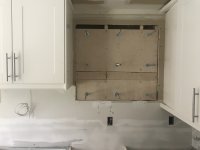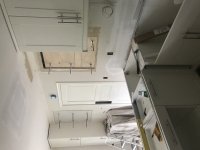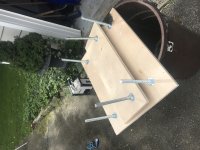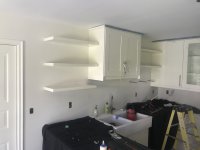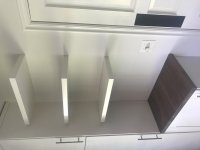If I wanted to do 10" deep, 2" thick, ~24" wide floating shelves, where the shelf consisted of a box that had a dado for LED strip lighting, what would be the best approach?
The shelves would be holding dishes, glassware, possibly small appliances, possibly 750ml bottles of liquid.
I have access to the studs in the wall behind (I'll be framing it), so my first thought was a buried bracket of some kind.
French cleats seem like there would be too much leverage at the front of the shelf unless I made them substantially thicker.
The rebar in the stud idea has appeal, but the shelf won't be solid, so I'm not sure exactly how i would do that. Maybe some inner structure designed to slip over the rebar?
Thanks,
Adam
The shelves would be holding dishes, glassware, possibly small appliances, possibly 750ml bottles of liquid.
I have access to the studs in the wall behind (I'll be framing it), so my first thought was a buried bracket of some kind.
French cleats seem like there would be too much leverage at the front of the shelf unless I made them substantially thicker.
The rebar in the stud idea has appeal, but the shelf won't be solid, so I'm not sure exactly how i would do that. Maybe some inner structure designed to slip over the rebar?
Thanks,
Adam

